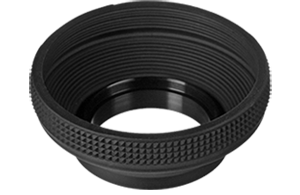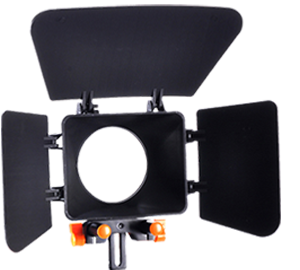You know sometimes you see the same problem over and over and you wonder how you can possibly help the folks experiencing an issue that they may not be aware of? Good, because that’s the purpose of this article.
Having spent over forty years as a photographer, some of that time selling gear, I am consistently surprised by what I hear in stores and see in the field. People spend hard earned money on cameras and lenses and at some point in the lifecycle look for ways to get better images, sometimes spending hundreds of dollars on top of their lenses to try to get there, while ignoring one of the most effective tools, that can also be super inexpensive.
That item is, as some may have guessed, the lens hood. Aha! Some of you thought I would say UV filter. Nope. You may choose a UV filter for protective purposes and a good one will actually cut UV wavelengths that your sensor may or may not see, but it won’t do anywhere near as much to improve your images as using a lens hood.
When should you use a lens hood?
The answer is simple. ALWAYS. There is no shooting situation where a lens hood will hurt and almost no situation where one will not help. A properly designed hood will reduce the likelihood of light glancing across the front element of your lens. This light doesn’t have to produce enormous flares to be damaging, but any light striking the front element obliquely WILL reduce contrast, increase the risk of internal reflections and can even impart a colour cast. Simply using a lens hood goes a very long way to improve contrast, colour and accurate exposure readings. A hood is like a seat belt. You can get by without one, but you are ahead of the game when you use it.

I see lots of folks shooting with their new cameras, using the kit lens without a hood. This is because manufacturers rarely if ever include a hood with these lenses and because many sellers rarely share how important a hood is. I see lots of cheap “protective” filters on these lenses that do nothing to improve image quality but do a lot to degrade it. But not near enough hoods.
When creatives learn about the importance of the hood and enquire about one, they often go into cardiac arrest when they learn that the manufacturer’s hood will often cost over $50. These aren’t the metal hoods of old, these are pieces of black plastic with a bayonet mount molded into them. If inkjet ink is ridiculously expensive as is so often said, then a branded hood must also fall into that category.
Fortunately, there are third party hoods available. Yes, they are offshore products and often are direct clones of the manufacturer brand hoods. But since they are ONLY black plastic tubes, they are a way to save a lot of money for something that is fundamentally simple. An off brand rigid hood from a third party can save you over 80% of the cost of the name brand product, do precisely the same job and leave your money in your pocket.
Hoods come in different shapes. We see long tunnel hoods for telephotos, wide throat hoods for wide angles and “petal” style hoods for ultrawides. Sometimes the hood is built in to the lens, but most often it is removable. Sigma does a very cool thing with some of their full frame lenses, offering a convertible hood, that works differently when used on a crop sensor camera. I love this kind of customer oriented thinking.

Standard Rubber Lens Hood
Decades ago, many manufacturers didn’t even do hoods. We used a rubber collapsible hood that screwed into the filter ring. They came in different sizes and also different shapes for use on different focal lengths. There are rubber hoods with a wide throat profile for wide angle lenses and ones with a narrower throat for standard and telephoto lenses.
Hoods also serve a protective function; some would say even more so than “protective” filters. Because they extend forward they can help protect the front element from foreign object damage. They also do this from the sides, super important if you carry your camera on a strap around your neck or over your shoulder.
Some pros, Joe McNally and Scott Kelby come to mind, eschew the hard plastic hoods on their 70-200mm lenses in favour of the collapsible rubber hood for the increased protection and speed of packing that a collapsing hood affords. Rubber hoods are the most cost effective route. Checking the Henry’s web site a 58mm wide angle rubber hood to fit a Canon 18-55mm kit lens is under $10. Your choice what you buy, so long as you put a hood on the lens.

Matte Box
Videography and cinematography experts understand the importance of glare management and take things a step farther than a simple hood by using a matte box. This is a multi panel hood so the one box can be used with lenses of different focal lengths, just by adjusting the position of the panels. It’s a very elegant and powerful solution but typically requires a special mounting system. If you are shooting video from a rig, you should have a matte box as part of your kit. Again, there are excellent matte boxes at a variety of price points. The attached image shows the adjustable panels and the mount to a 15mm rod rig system.
Before someone gets annoyed because it sounds like I am against protective filters, it’s your lens, your choice, although if you are going to stick a piece of glass in front of your precision lens, at least make sure it is optical glass that has a multi-coating. But while you are spending money on that filter, don’t forget the hood.



COMMENT (1)
Pingback: Top Tips for Capturing Better Landscape Photos | Photography and video news, reviews and tips | Henry's Camera